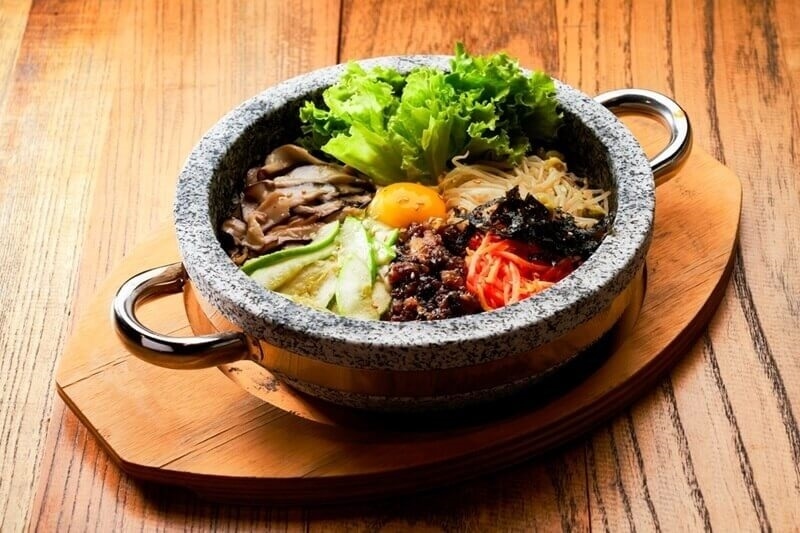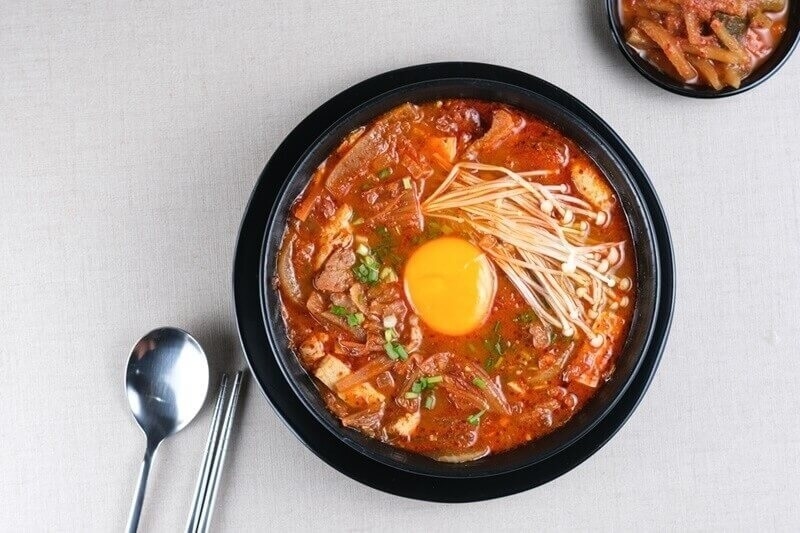
There are days when you crave something spicy, soulful, and deeply satisfying - the kind of food that not only warms your stomach but also your soul. That's exactly what Korean comfort food does. Rooted in centuries of culinary tradition, it combines bold spices, symbiotic textures, and soulful flavors that speak directly to the heart. On a cold, rainy day or in the wee hours of the night, Korean comfort food has the perfect dish for every mood.
Let's explore how these vibrant dishes, from spicy Korean soup and bibimbap recipe easy to kimchi fried rice, bring warmth, comfort, and a burst of flavor to your table.
Korean comfort food is not just about taste; it is about nostalgia. It is the kind of food that reminds Koreans of home cooking, street food during cold winter evenings, or the aroma of homemade stew coming from the kitchen. There is a story in every dish - one of resilience, family, and community.
In its simplest form, Korean comfort food is about three things:
Whether you opt for a quick bibimbap recipe easy enough for a weeknight dinner or indulge in comforting Korean stews, every meal is like a warm hug.
When the weather turns cold or you’re just in the mood for something invigorating, a spicy Korean soup is your answer. Koreans have mastered the art of using spice to awaken the senses without overwhelming the palate.
If you're trying to create spicy Korean soup at home, hoard essential ingredients like gochujang, gochugaru (Korean red pepper flakes), garlic, and sesame oil. These form the foundation of most warming Korean stews and soups.

Sometimes you just want something simple but healthy - something that is complete in a single bowl. That's where bibimbap comes in.
The name "bibimbap" literally means "mixed rice," and it's one of the most well-known Korean comfort foods around the world. The concept is simple but endlessly variable: hot rice topped with a mixture of vegetables, protein, and a spicy-sweet gochujang sauce.
A simple bibimbap recipe to try at home can be as easy as topping leftover rice with a fried egg and whatever vegetables you have on hand -
These are all traditional options. Add a drizzle of sesame oil and a spoonful of gochujang on top, and mix everything together before taking your first bite.
What's remarkable about bibimbap isn't just its taste; it's balance. Each bite incorporates spice, crunch, softness, and warmth. On weeknights that get hectic, a simple bibimbap recipe becomes your go-to dish—soul-satisfying, vibrant, and nutritious.
Tip: To step it up, you can serve it in a dolsot bibimbap (hot stone bowl) to get that crave-worthy crispy rice at the bottom - a hallmark of traditional Korean comfort food.
Sometimes, nothing hits the spot like a perfectly golden and crispy piece of fried chicken. The Korean version has been taking the world by storm - and for good reason. Korean fried chicken is crunchier, lighter, and far more flavorful than most types of fried chicken.
What sets it apart is the double-frying method.
It's the perfect snack for a game night, casual gathering, or even a night in by yourself when you want to be pampered with zero additional effort. Korean fried chicken is available in many American restaurants now, but it's easier than you think to make at home.
There are not many dishes that feel as homey and nostalgic as kimchi fried rice. It's one of those Korean comfort foods that reminds you how powerful simplicity can be. Born out of a way to use up leftover rice and kimchi, it's since spread across the world as a favorite for its bold taste and quick cooking.
Making kimchi fried rice is as easy as it is satisfying.
The harmony of spicy, sour, and umami tastes embodies all that Korean comfort food represents. During times of turmoil, a plate of kimchi fried rice provides solace and comfort - like returning to a familiar memory.
Few things in the world are more soul-comforting than comforting Korean stews. Served on a cold winter night or among friends sitting around a pot that simmers, these stews represent the essence of Korean comfort foods.
Each stew has its own personality and history.
What's unique about warm Korean stews is the long simmering that extracts flavor from even the simplest ingredients - tofu, vegetables, bones, or seafood. They're nourishing, healthy, and incredibly comforting.
Food in Korean culture is not just nourishment - it's community.
The highly communal nature of Korean dining - with shared dishes, numerous side plates, and steaming pots in the center - is a metaphor for togetherness. Even when you are dining alone, a single bowl of Korean comfort food has a way of making you feel as if you are part of something greater - a tradition of warmth, resilience, and flavor.
You needn't cross the Pacific to enjoy Korean comfort food. With Korean ingredients now easily found in U.S. supermarkets and online markets, it has never been simpler to recreate these comforting dishes.
The following is a starter pantry list for U.S. residents who want to try their hand at Korean cooking:
Gochujang (Korean chili paste) – for spicy Korean soup, sauces, and marinades
Doenjang (soybean paste) – for hearty Korean stews and dips
Gochugaru (Korean chili flakes) – for heat and color
Kimchi – the foundation of kimchi fried rice and many stews
Sesame oil & seeds – to finish your bibimbap recipe, or stir-fried dishes
Cooking Korean food at home is about embracing imperfection. Each family has its own version, and every single one of them tastes like it's personal. What matters is that warmth and satisfaction when you take the first bite - that point where Korean comfort food lives up to its reputation for being spicy and soulful.
In any cuisine, comfort food brings people together - but Korean comfort food does it with a special blend of spice, heart, and harmony. Whether you find comfort in a boiling bowl of spicy Korean stew, the satisfying crunch of Korean fried chicken, or the homely flavor of kimchi fried rice, each dish has a story of love and tradition to tell.
The best part? You can enjoy it anywhere - from a busy U.S. city apartment to a country kitchen in the middle of nowhere—becauseflavour the essence of Korean food is not about location but about feeling. Whether it's an easy bibimbap recipe or cozy Korean stews, every bowl delivers exactly what your mood is craving - spicy, soulful, and irretrievably comforting.
This content was created by AI